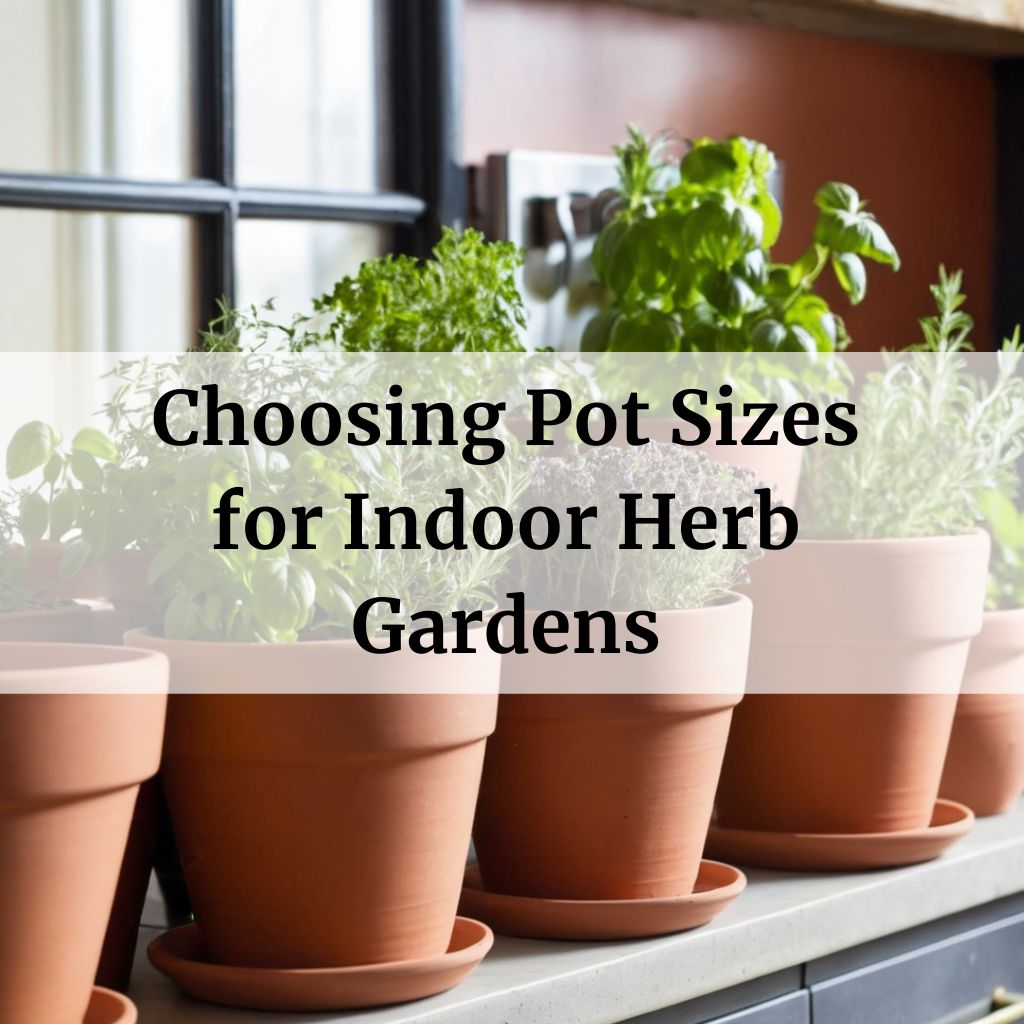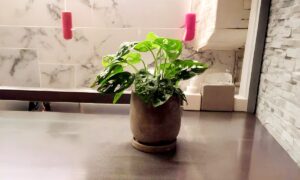
Selecting the proper pot sizes is a key factor in establishing a thriving indoor herb garden. The pot functions as the foundation that roots will grow in, so it needs to accommodate each herb’s specific needs. Consider aspects like mature plant size, root depth, drainage, and pairing compatibility when choosing containers. This guide will walk you through the best practices for choosing pot sizes tailored to your herbs.
In this article
Consider the herb’s root system when selecting a pot
When choosing a pot for an indoor or outdoor potted herb garden, one of the most important things to consider is the root system of the herbs you want to grow. Herbs like basil and parsley have long taproots that grow deep, while herbs like thyme and chives have shallow, fibrous roots.
The depth of the pot needs to accommodate the root system and pot depth. Shallow-rooted herbs will thrive in a 4-inch pot as long as it’s wide enough. But deep-rooted herbs need taller pots, at least 8-10 inches deep, to allow their roots to grow unimpeded.

Always choose a pot that is a couple of inches wider than the current root system of the herb plant. Their roots will quickly grow to fill the space. Having room to spread out encourages healthy root development.
Use small pots for petite herbs, larger for bigger varieties

The size of the herb plant itself is a factor in selecting the right pot size:
- Tiny herbs like dwarf thyme and globe basil can grow happily in 4-6 inch pots their whole lives. These small pots are perfect for shallow-rooted, compact herb varieties.
- Mid-sized herbs like oregano, mint, and regular basil do best in 6-8 inch pots. This gives their roots room to spread out without becoming overcrowded.
- For larger herb varieties, like parsley and lemon balm, 8-10 inch pots are ideal. The extra space allows them to reach their mature sizes.
Really big, multi-branched herbs like parsley, lemon balm, and lemongrass need a minimum of 10-12 inch pots. Choosing too small a pot size will restrict their growth.
Match pot size to your available space
When deciding on pot size, make sure to consider the space you have available for your indoor or outdoor potted herb garden. Urban apartments may only have room for a couple of 4-6 inch pots.
Larger suburban homes likely have more space for 10-inch or 12-inch or larger pots or even raised garden beds. Just make sure outdoor pots have good drainage.
For a compact indoor herb garden, look for rectangular pots that can sit side-by-side on a shelf. Round pots take up more space. Leave a few inches between pots to allow air circulation.
If space is truly limited, don’t be afraid to plant compatible herbs together in larger containers. Just ensure they have similar light and watering needs.
Provide good drainage with proper pot features
When growing herbs in containers, providing good drainage with the right material for growing containers is crucial.
For indoor gardens and apartments, choose porous pots like unglazed terra cotta or ceramic which promote evaporation. Avoid non-porous plastic or metal pots which may retain moisture.
Unglazed terracotta and ceramic pots are naturally porous, promoting evaporation and improving drainage. Avoid non-porous materials like plastic and metal which may retain moisture.
Fill pots with a commercial potting mix containing peat or coconut coir to help aerate the soil. For enhanced drainage, add perlite or small pebbles to the bottom 1-2 inches of the pot.
Pair herbs appropriately when combining in pots
Creative herb garden designs often involve planting multiple herbs together in a single large pot. This works beautifully, as long as the herbs have similar needs.
When combining herbs, match those with comparable light requirements. For example, basil, oregano, thyme all thrive in full sun. Also pair herbs that like consistent moisture, as watering needs often differ.
Make sure to space the herbs appropriately so each has enough room to grow. Research mature sizes to avoid overcrowding. Basil can easily take over a whole pot if not controlled.
Some pleasing herb combinations include:
- Mint, thyme and sage
- Rosemary, lavender and parsley
- Basil, cilantro and chives
Choosing the right pot size lays the foundation for growing a successful indoor herb garden. Take into account the individual herb’s root depth, mature plant size, your available space, drainage needs, and compatibility with other plants.
Frequently asked questions
What size pot is best for growing basil indoors?
For growing basil indoors, an 8-10 inch pot is ideal. This gives the basil plenty of room for its large root system but isn’t oversized. Ensure the pot is a couple inches wider than the plant’s current container.
My windowsill space is limited. What are my options for small pots?
For compact indoor herb gardens, 4-6 inch pots are great choices. Opt for petite herb varieties like thyme, chives, or dwarf basil that will thrive in shallow containers. Just make sure to water more frequently, as small pots dry out quicker.
Should I use plastic, ceramic or terracotta pots?
Unglazed terracotta or ceramic pots work best, as they naturally allow air and moisture to pass through the sides. This improves drainage and reduces the risk of root rot. Avoid non-porous plastic pots which may hold in too much moisture.
Can I plant several compatible herbs together in one large pot?
Yes! Combining 3-5 herbs with similar needs in a larger 12-18 inch container creates a beautiful mixed display. Just make sure to space them appropriately and match those with comparable light and water requirements.
With the proper pot size and growing conditions, you’ll be harvesting homegrown herbs for culinary creations in no time! Start slowly with just one or two herbs, and you’ll quickly have fresh flavors at your fingertips.







